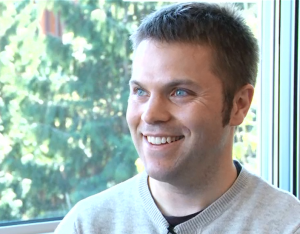 The New York Times published an excellent article this week about CrowdSignals, a new initiative spearheaded by UW CSE alum Evan Welbourne (Ph.D., ’10) that seeks to build the largest set of rich, longitudinal mobile and sensor data through crowdsourcing. The community data set, which will include user interactions, geo-location and sensor data from a demographically diverse pool of users, would be available to academic and corporate researchers across a variety of disciplines to advance research, teaching and product development.
The New York Times published an excellent article this week about CrowdSignals, a new initiative spearheaded by UW CSE alum Evan Welbourne (Ph.D., ’10) that seeks to build the largest set of rich, longitudinal mobile and sensor data through crowdsourcing. The community data set, which will include user interactions, geo-location and sensor data from a demographically diverse pool of users, would be available to academic and corporate researchers across a variety of disciplines to advance research, teaching and product development.
From the article:
“Words and pictures, culled from across the web, have been the digital grist for remarkable gains in computing tasks like image recognition and speech translation. But another huge data resource — sensor data from smartphones — lags behind as a fuel source for major research advances.
“CrowdSignals, a new initiative to collect, label and pay for mobile sensor data, seeks to overcome that shortfall. The organization’s approach relies less on innovation in technology than on economics and creating a marketplace for sensor data….
“‘We haven’t even begun to tap the potential of smartphone data,’ said Evan Welbourne, a computer scientist who heads the CrowdSignals project.
“The promising future of mobile data, experts agree, is that it can point the way to new insights in health care, transportation, urban planning and the social sciences.”
CrowdSignals launched an IndieGogo campaign to fund its data collection efforts, exchanging access to the data and a hand in shaping future phases of the project for a modest financial contribution. The funding will be used to pay individuals who contribute their bulk data and labeling to the project.
Read the full article here. To learn more about the initiative, visit the CrowdSignals website here.

